Yunqi Lei
DC-GNet: Deep Mesh Relation Capturing Graph Convolution Network for 3D Human Shape Reconstruction
Aug 27, 2021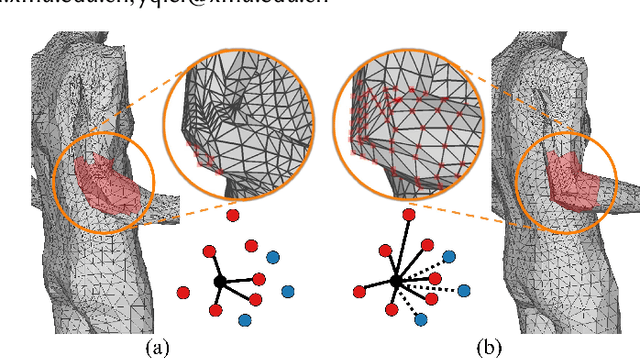
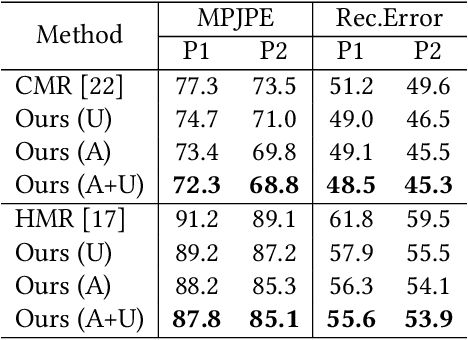

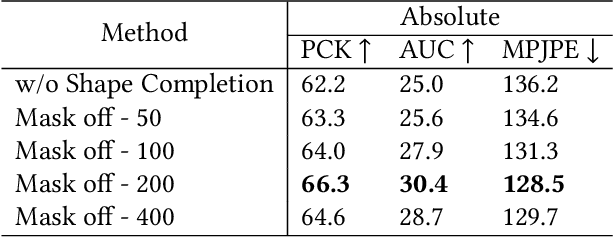
Abstract:In this paper, we aim to reconstruct a full 3D human shape from a single image. Previous vertex-level and parameter regression approaches reconstruct 3D human shape based on a pre-defined adjacency matrix to encode positive relations between nodes. The deep topological relations for the surface of the 3D human body are not carefully exploited. Moreover, the performance of most existing approaches often suffer from domain gap when handling more occlusion cases in real-world scenes. In this work, we propose a Deep Mesh Relation Capturing Graph Convolution Network, DC-GNet, with a shape completion task for 3D human shape reconstruction. Firstly, we propose to capture deep relations within mesh vertices, where an adaptive matrix encoding both positive and negative relations is introduced. Secondly, we propose a shape completion task to learn prior about various kinds of occlusion cases. Our approach encodes mesh structure from more subtle relations between nodes in a more distant region. Furthermore, our shape completion module alleviates the performance degradation issue in the outdoor scene. Extensive experiments on several benchmarks show that our approach outperforms the previous 3D human pose and shape estimation approaches.
SK-Net: Deep Learning on Point Cloud via End-to-end Discovery of Spatial Keypoints
Mar 31, 2020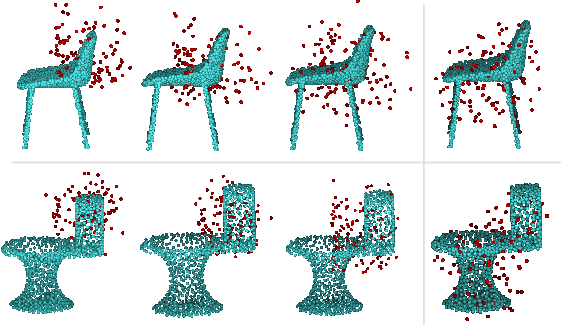
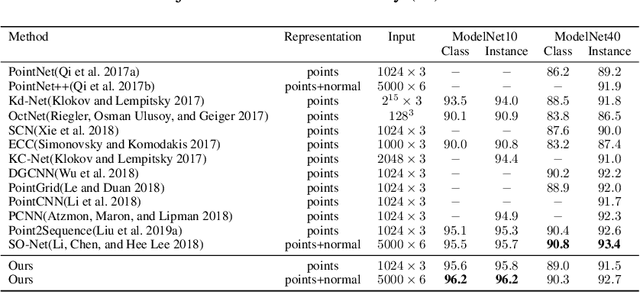
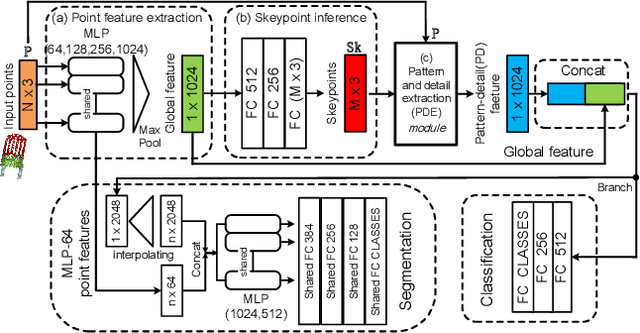

Abstract:Since the PointNet was proposed, deep learning on point cloud has been the concentration of intense 3D research. However, existing point-based methods usually are not adequate to extract the local features and the spatial pattern of a point cloud for further shape understanding. This paper presents an end-to-end framework, SK-Net, to jointly optimize the inference of spatial keypoint with the learning of feature representation of a point cloud for a specific point cloud task. One key process of SK-Net is the generation of spatial keypoints (Skeypoints). It is jointly conducted by two proposed regulating losses and a task objective function without knowledge of Skeypoint location annotations and proposals. Specifically, our Skeypoints are not sensitive to the location consistency but are acutely aware of shape. Another key process of SK-Net is the extraction of the local structure of Skeypoints (detail feature) and the local spatial pattern of normalized Skeypoints (pattern feature). This process generates a comprehensive representation, pattern-detail (PD) feature, which comprises the local detail information of a point cloud and reveals its spatial pattern through the part district reconstruction on normalized Skeypoints. Consequently, our network is prompted to effectively understand the correlation between different regions of a point cloud and integrate contextual information of the point cloud. In point cloud tasks, such as classification and segmentation, our proposed method performs better than or comparable with the state-of-the-art approaches. We also present an ablation study to demonstrate the advantages of SK-Net.
Joint Representation of Multiple Geometric Priors via a Shape Decomposition Model for Single Monocular 3D Pose Estimation
May 31, 2019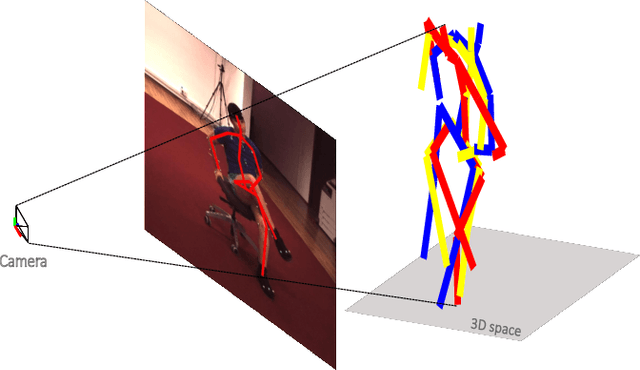

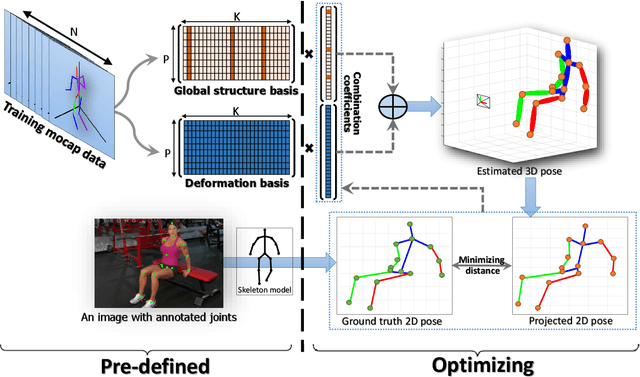

Abstract:In this paper, we aim to recover the 3D human pose from 2D body joints of a single image. The major challenge in this task is the depth ambiguity since different 3D poses may produce similar 2D poses. Although many recent advances in this problem are found in both unsupervised and supervised learning approaches, the performances of most of these approaches are greatly affected by insufficient diversities and richness of training data. To alleviate this issue, we propose an unsupervised learning approach, which is capable of estimating various complex poses well under limited available training data. Specifically, we propose a Shape Decomposition Model (SDM) in which a 3D pose is considered as the superposition of two parts which are global structure together with some deformations. Based on SDM, we estimate these two parts explicitly by solving two sets of different distributed combination coefficients of geometric priors. In addition, to obtain geometric priors, a joint dictionary learning algorithm is proposed to extract both coarse and fine pose clues simultaneously from limited training data. Quantitative evaluations on several widely used datasets demonstrate that our approach yields better performances over other competitive approaches. Especially, on some categories with more complex deformations, significant improvements are achieved by our approach. Furthermore, qualitative experiments conducted on in-the-wild images also show the effectiveness of the proposed approach.
 Add to Chrome
Add to Chrome Add to Firefox
Add to Firefox Add to Edge
Add to Edge